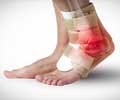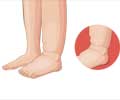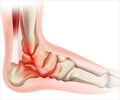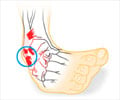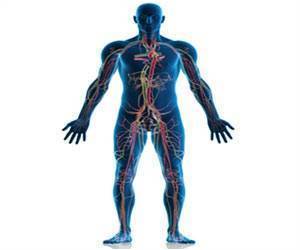It's a condition that most people prefer not to talk about, yet sufferers will go to extremes to find help for this embarrassing problem.
It's a condition that most people prefer not to talk about, yet sufferers will go to extremes to find help for this embarrassing problem. It's called overactive bladder (OAB) and it's characterized by a sudden and unstoppable need to urinate, sometimes causing urine leakage.
Now, to reduce the symptoms of OAB, an Emory Crawford Long Hospital urologist is using nerve stimulation in the ankle to better help control the bladder."Known as percutaneous tibial nerve stimulation (PTNS), this is one of the least invasive forms of neurostimulation for urological conditions, such as overactive bladder and urge incontinence," says Jenelle Foote, MD, an Emory Crawford Long Hospital urologist. "We can now turn to this form of treatment when patients have not had success with medication, behavioral therapies or pelvic muscle exercises, but who do not want to undergo surgery."
The treatment consists of placing a fine needle, similar to an acupuncture needle, into the skin just above the ankle to access the posterior tibial nerve. A small electrode is then placed on the needle and a mild electrical current is passed through. Most patients state that their foot feels "asleep" during the treatment. Each stimulation session takes about 30 minutes and 12 sessions are recommended to get the best benefit.
"PTNS works in patients with overactive bladder because, like acupuncture, it uses the nervous system to change the way organs work and function," explains Dr. Foote.
Patients ranging in age from the 30s to the 70s have benefited from the PTNS therapy, which was FDA-approved in 2006. "Many of my patients report a 50 to 70 percent improvement in bladder control following the 12-session treatment plan," says Dr. Foote.
Some patients continue taking medication during and after the treatments, and an occasional booster stimulation may also be needed following the 12 sessions.
Advertisement
Source: Emory University
LIN/V

